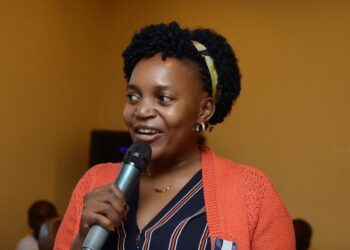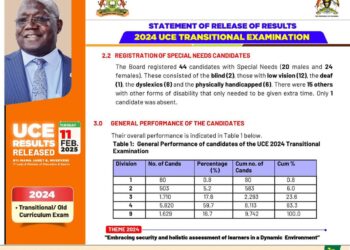Severe acute respiratory syndrome coronavirus two is a strain of coronavirus that causes COVID-19. It is the respiratory illness responsible for the ongoing COVID-19 pandemic. The virus previously had a provisional name, 2019 novel coronavirus and also called human coronavirus 2019.
First identified in the city of Wuhan, Hubei, China, the World Health Organization declared the outbreak a Public Health Emergency of International Concern on 30 January 2020, and a pandemic on 11 March 2020.
Severe acute respiratory syndrome coronavirus two is a positive-sense single-stranded RNA virus that is contagious in humans. It is the successor to severe acute respiratory syndrome coronavirus one, which caused the 2002–2004 Severe Acute Respiratory Syndrome outbreak.
Pandemics do not die—they fade away. And that is what covid-19 is likely to do in the next coming months of 2022.
Despite the health ministry’s commitment to vaccinate Ugandans, alongside Ugandans’ laxity during vaccination campaigns, there will be local and seasonal flare-ups, especially in chronically undervaccinated districts of Uganda.
I’m conc sure For the Epidemiologists are watching and have been observing new variants that might be capable of outflanking the immunity provided by vaccines. Even so, over the coming years, as covid settles into its fate as an endemic disease, like flu or the common cold, life in most parts of the country is likely to return to normal at least, the post-pandemic normal.
Behind this prospect lie both a stunning success and a depressing failure. The success is that very large numbers of people have been vaccinated and that, at each stage of infection from mild symptoms to intensive care, new medicines can now greatly reduce the risk of death. It is easy to take for granted, but the rapid creation and licensing of so many vaccines and treatments like covidex for a new disease is a scientific triumph.
A good example is the polio vaccine that took 20 years to go from early trials to its first American licence.
I soundly remember that by the end of 2021, just two years after covid-19 was first identified, the world was turning out roughly 1.5bn doses of covid vaccine each month. I can from such predict that by the end of June 2022 a total of 25bn doses would have been produced.
The symptoms of COVID‑19 are variable, but often include fever, cough, headache, fatigue, breathing difficulties, loss of smell, and loss of taste. Symptoms have always began one to fourteen days after exposure to the virus.
Vaccines may not offer complete protection, however, especially among the elderly. Yet here, too, medical science has risen to the challenge. For example, early symptoms can be treated with molnupiravir, a twice-daily antiviral pill that in trials cut deaths and admissions to hospital by half. The gravely ill can receive dexamethasone, a cheap corticosteroid, which reduces the risk of death by 20-30%. In between are drugs like remdesivir and an antibody cocktail made by Regeneron.
Think of the combination of vaccination and treatment as a series of walls, each of which blocks a proportion of viral attacks from becoming fatal. The erection of each new wall further reduces the lethality of covid.
However, alongside this success is that failure. One further reason why covid will do less harm in the future is that it has already done so much in the past. Very large numbers of people are protected from current variants of covid only because they have already been infected. And many more, particularly in the developing states like Uganda, will remain thinly unprotected by vaccines or even medicines long into mid 2022.
The body immunity has been acquired at terrible cost. The International media has always tracked excess deaths during the pandemic—the mortality over and above what you would have expected in a normal year. The International media central estimate as at the end of year 2021, was of a global total of 16.5m deaths with a range from 10.2m to 19.2m, which was 3.3 times larger than the official count.
Working backwards using assumptions about the share of fatal infections, a very rough estimate suggests that these deaths are the result of 1.5bn-3.6bn infections—six to 15 times the recorded number.
The combination of infection and vaccination explains why in, say, Uganda in the autumn, we could detect antibodies to covid in 93% of adults. People are liable to re-infection, as Uganda shows, but with each exposure to the virus the immune system becomes better trained to repel it.
Along with new treatments and the fact that more young people are being infected, that explains why the fatality rate in Uganda is now only a tenth of what it was at the start of 2021. Other countries will also follow that trajectory on the road to endemicity.
All this could yet be upended by a dangerous new variant. The virus is constantly mutating and the more of it there is in circulation, the greater the chance that an infectious new strain will emerge. However, even if Omicron and Rho variants strike, they may be no more deadly than Delta is.
In addition, existing treatments are likely to remain effective, and vaccines can rapidly be tweaked to take account of the virus’s mutations.
Increasingly, therefore, Ugandans will die from covid because they are elderly or infirm, or they are unvaccinated or cannot afford medicines.
Sometimes people will remain vulnerable because they refuse to have a jab when offered one—i applaud the health Education and promotion department for its resilient work done in making Ugandans aware of covid-19. But vaccine doses are also being hoarded by rich countries, and getting needles into arms in poor and remote places is hard. Livelihoods will be ruined and lives lost all for lack of a safe injection that is currently free of charge in the country.
Covid is not done yet. But by 2023, it will no longer be a life-threatening disease for most vaccinated Ugandans.
Covid-19 will still pose a deadly danger to hundreds in the unvaccinated part of the country. But the same is, sadly, true of many other conditions. Covid will be well on the way to becoming just another disease.
For God and my Country
Lukanga Samuel
lukangasamuel55@gmail.com
+256 785717379
The writer is a social development enthusiast and a judicious youth leader from Nakaseke District
Do you have a story in your community or an opinion to share with us: Email us at editorial@watchdoguganda.com













